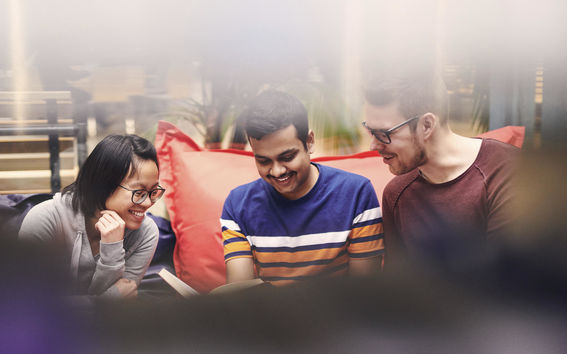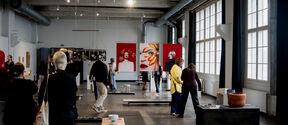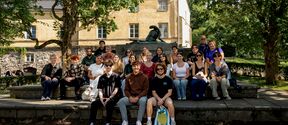Electronics and Nanotechnology, Master of Science (Technology)
By developing modern hardware technology, electronics and nanotechnology experts play a key role in shaping the future.
The predecessors of the satellite, named Aalto-3, are Aalto-1 and Aalto-2, both of which were launched into orbit in 2017. The project is led by Professor Jaan Praks as in previous satellite projects.
The satellite projects provide students with the opportunity to participate in the development, testing, and operation of space technology and satellites. In addition to student satellites, Aalto University has also constructed satellites for research purposes.
Aalto-3 has been under construction for several years, but the progress of the project was hindered by the COVID-19 pandemic, leading to a practical restart in the spring of 2022. The developing satellite will also benefit space technology research by allowing the testing and development of a new S-Band radio, which will be used in future satellites of Aalto's space technology research group. Additionally, the satellite is intended to capture successful images and test GPS in space. The University of Turku is also involved in the project.
The Aalto-3 student team joined the European Space Agency's (ESA) ESA Test Opportunities testing programme in the summer, along with three other teams. The programme is designed for university students to test small satellites and satellite's scientific instruments. In the programme, students had the opportunity to create a test plan, meet with the space agency's test operators, conduct a testing campaign in Belgium, and prepare a test report. The Aalto-3 team's participation in the programme lasted nearly nine months in total.
One of the students involved in the Aalto-3 project is Tatu Haakana, a third-year mechanical engineering student who also works as a research assistant in the Foresail-2 science satellite research group. He joined the project because student satellite projects provide an opportunity to explore space technology without prior experience.
'Working on the project has taught me a lot about the requirements of space technology in terms of mechanics, electronics, software, and testing. It has been particularly interesting to be part of a research group with the goal of building satellites in Finland and thus advancing Finnish space research,' says Haakana.
Student Topi Räty has been interested in space technology for a long time, so joining the project felt natural to him. Räty is in his fifth year of studying technical physics.
'I've always wanted to work in the space industry, and in high school, Aalto-1 and Aalto-2 satellites inspired me to apply to Aalto,' says Räty.
Räty describes the project as continuous learning, allowing participants to engage in various activities. Building a satellite involves tasks such as circuit design, assembly, soldering, and programming subsystem logic.
'At the same time, you gradually see and learn what a functional satellite entails and why. As a physicist, I had little experience with these things (other than soldering), but if you're willing to work and ask for help, everything is possible! It's especially great to realise how much you understand about the satellite mission in the end. And, of course, it's amazing that something crafted with my own hands will one day soar into space!'
Feeling inspired? Aalto students, you can be part of this adventure! The Aalto-3 project team is excitedly anticipating the satellite's completion and launch. To make it happen, the Aalto-3 team is looking for additional students to contribute to the project, especially those skilled in radio technology, electronics, and embedded systems. For more information about the project, you can contact Professor Jaan Praks at jaan.praks@aalto.fi.
You can study the topic in the Electronics and Nanotechnology master's programme and in the international Space Science and Technology joint programme.

By developing modern hardware technology, electronics and nanotechnology experts play a key role in shaping the future.

SpaceMaster V is a continuation of the original Erasmus Mundus Joint Master Degree programmes launched in 2004 and implemented by a consortium of leading European universities in close collaboration with research and industrial organizations.


